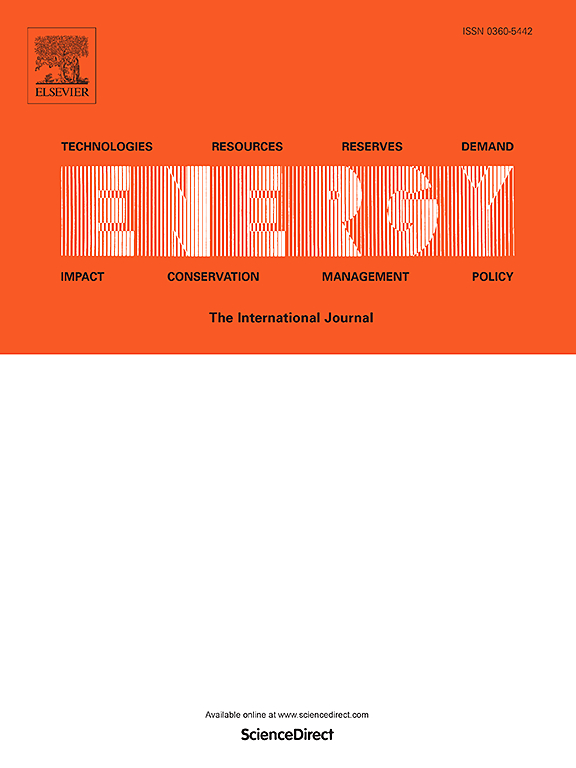A comparative study of radiant floor heating strategies for passive house in severely cold regions: A case study of Harbin
IF 9
1区 工程技术
Q1 ENERGY & FUELS
引用次数: 0
Abstract
This study explores the efficient heating strategy for passive houses in severely cold climates to improve the indoor thermal environment. Intermittent heating strategies based on indoor temperature to radiant floor heating system are applied and various heating methods under three heating strategies for passive houses are simulated. We proposed three metrics to rate the effectiveness of heating strategies: the indoor comfort rate (ICR), the physical comfort rate (PCR), and the thermal response coefficient (TRC), which are integrated to evaluate the performance of heating strategies comprehensively. It is shown that outdoor temperature fluctuation has little influence on the choice of heating strategy for passive houses. Furthermore, the short-interval heating strategy's ICR and PCR are above 90 %, and the TRC is above 0.2 h−1, demonstrating better performance than the continuous low temperature and long interval heating strategies. The results suggest the adoption of a short-interval heating mode for passive houses, with a suggested inlet water temperature of 60 °C and an indoor temperature control range of 22–26 °C. The study compares and analyzes three control strategies (continuous low-temperature heating, long interval heating, and short-interval heating), providing a reference for selecting appropriate heating strategies under different usage scenarios.
求助全文
约1分钟内获得全文
求助全文
来源期刊

Energy
工程技术-能源与燃料
CiteScore
15.30
自引率
14.40%
发文量
0
审稿时长
14.2 weeks
期刊介绍:
Energy is a multidisciplinary, international journal that publishes research and analysis in the field of energy engineering. Our aim is to become a leading peer-reviewed platform and a trusted source of information for energy-related topics.
The journal covers a range of areas including mechanical engineering, thermal sciences, and energy analysis. We are particularly interested in research on energy modelling, prediction, integrated energy systems, planning, and management.
Additionally, we welcome papers on energy conservation, efficiency, biomass and bioenergy, renewable energy, electricity supply and demand, energy storage, buildings, and economic and policy issues. These topics should align with our broader multidisciplinary focus.
 求助内容:
求助内容: 应助结果提醒方式:
应助结果提醒方式:


